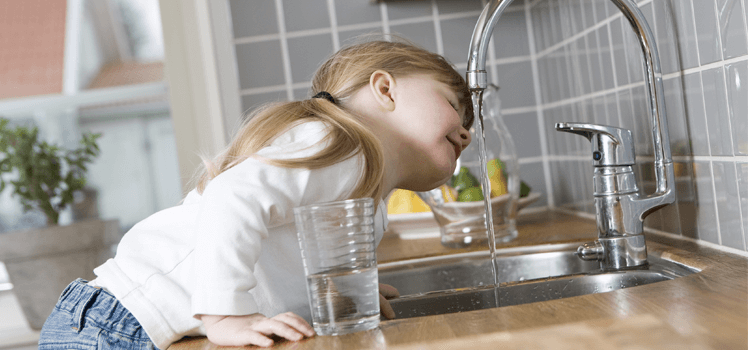As a landlord, it seems you never hear the end of electrical regulations, gas safety and EPC requirements – but what’s the deal when it comes to water?
In this article, you’ll find out what your responsibilities are when it comes to water, how to assess the risks of Legionella and what you can do to keep your water – and your tenants – safe.
IMPORTANT: Landlords must assess the potential risk of Legionella bacteria in their rental property, however, a Legionnaires’ testing certificate is not legally required.
- What is Legionella?
- What are the risks of Legionnaires’ disease?
- Is a Legionella risk assessment a legal requirement?
- What does a landlord Legionella risk assessment involve?
- How often do I need a Legionella risk assessment?
- How long does a landlord Legionella risk assessment take?
- How can landlords minimise the risks of Legionella?
- What other inspections do landlords need to carry out?
- How can I book a Legionella risk assessment?
Instant Rental Price Estimator
Discover your property’s true rental value in seconds with our free, UK-wide price comparison tool.
What is Legionella?
Legionella is hazardous bacteria that can be found in water. In a residential property, Legionella can grow in water stored at temperatures between 20°C and 45°C degrees. If ingested or inhaled, water containing Legionella will lead to Legionnaires’ disease or legionellosis – an infectious and sometimes fatal form of pneumonia.
Hot and cold water systems are an ideal environment for Legionella to grow in. The risk of contamination is particularly higher in:
- Water tanks and systems in which water is stagnant and/or recirculated
- Temperatures between 20°C and 45°C degrees
- Water droplets or aerosols produced by whirlpool baths or showerheads
- Mist and spray dispersed into the air
- Rust, scale, sludge and biofilm that “feed” the bacteria
- Properties that are left empty for long period of time
The risk of Legionella is particularly low in properties with combi boilers, as the system keeps the water moving – giving the bacteria little chance to develop.
However, homes with open water tanks (usually older buildings) have a substantially higher risk of Legionella, as the water is more likely to be left to stagnate.
What are the risks of Legionella and Legionnaires’ disease?
Legionnaires’ disease can be very serious. If infected, you or your tenant will be subject to:
- High
fevers - Coughing
- Headaches
- Shortness
of breath - Nausea
The symptoms of Legionnaires’ disease usually last between 2 to 10 days and can be treated with antibiotics if identified soon enough. Some people are particularly vulnerable to the risks of Legionella, including older people, those with lung issues and poor immune function.
Are landlords legally required to carry out a Legionella risk assessment?
There is a legal duty for landlords to assess and control the risk of exposure to legionella bacteria, but they are not required to conduct a professional assessment or test.
Whilst testing is part of a professional Legionella risk assessment, Health and safety law does not require landlords to test their water systems produce or obtain ‘Legionnaires testing certificate’.
HSE Myth Busters: Landlord’s Responsibilities Regarding Legionella Risks
Landlords in Scotland are legally required to have a Legionella Risk Assessment.
Landlords in England and Wales are not legally required to produce a formal certificate in the same way they are expected to have an EICR, EPC or Gas Safety Record.
However, landlords do have a more general legal duty of care to protect the health and safety of their tenants – a part of which is to ensure their property’s water is safe to drink and use.
To do this, landlords can carry out a Legionella risk assessment. A professional risk assessment is not a formal legal requirement, however, it’s a good way to ensure your water supply is safe.
It is also strongly recommended in the government’s How to Let guide.
What does a landlord Legionella risk assessment involve?
A Legionella risk assessment will generally cover all water systems in your rental property. The assessment itself will involve:
- Identifying potential hazards and the level of risk posed
- Identifying who is at risk
- Testing the water system for Legionella*
- Putting adequate control measures in place to minimise the risk
- Recording the findings of the assessment
- Reviewing the assessment as needed
*Testing or sampling water for Legionella bacteria is not a legal requirement for landlords, but is typically part of a Legionella risk assessment carried out by a professional.
A Legionella risk assessment should be carried out by someone with a competent understanding of the hazard of Legionella.
Some landlords may feel confident enough to perform this themselves, however, if you don’t feel qualified (or simply don’t have the time) you can arrange for a professional assessor to do it for you.
If you book a professional Legionella inspection, you will receive a report containing the relevant information listed above, including significant findings and any suggested control measures.
Book your Legionella risk assessment today for £129 (inc VAT).
How often should I carry out a landlord Legionella risk assessment?
For rental properties with water systems that could pose a potential Legionella risk, it is recommended that a Legionella risk assessment is carried out once every two years – or before a new tenancy begins. It’s also a good idea to perform a risk assessment if there are significant changes to the property’s water systems.
How long does a professional Legionella risk assessment take?
The duration of a professional Legionella risk assessment varies from property to property.
Your assessor will need to take a digital temperature reading of every hot and cold tap in the property and a reading of outlet pipes from water tanks.
They will also visually inspect every tap and showerhead, report on redundant pipework and flexible hoses and access any water tanks in the loft. If the property has a garden with an exterior tap, it must be tested for limescale and outdoor hoses will be inspected as well.
So, a one-bed flat with one bathroom and a combi boiler would take approximately 20 minutes to inspect, whilst a three-bed house, with two bathrooms, a utility room, a garden and a hot and cold tank would take around an hour to complete.
How can landlords minimise the risks of Legionella?
To help reduce the risk of Legionella, the Health and Safety Executive have recommended some simple control measures, including:
- Flushing out the water system before the property is let (and once a week during void periods)
- Ensuring systems and tanks are soundly and tightly fit to avoid debris getting in
- Setting control parameters, such as setting the temperature of the hot water cylinder to ensure hot water is stored at 60°C
- Removing any faulty or redundant pipework
The above controls are the landlord’s responsibility, but tenants should be notified of any measures in place and be advised to:
- Notify
the landlord if there are problems with the water system (such as the hot water
not working) - Not
adjust set temperature parameters - Regularly
clean and disinfect showerheads
Read our latest article to find out what handy tricks and tips landlords are using the clean and maintain their homes.
What other inspections and assessments do landlords need to carry out?
A formal Legionella risk assessment and test is not mandatory, but there are some things that are a legal requirement.
As a landlord, you should:
- Carry out an annual gas safety inspection and issue your tenant a copy of the gas safety certificate
- Conduct an electrical safety inspection every 5 years
- Carry out an energy performance assessment to ensure your property has an energy performance rating of ‘E’ or above and issue a copy of your EPC to your tenant
- Check all smoke alarms and carbon monoxide detectors are working on the first day of tenancy
- Give your tenant a copy of the government’s How to Rent guide at the start of their tenancy
If you don’t arrange your required inspections or fail to give your tenant’s the correct documents, you could be subject to hefty fines and may invalidate your right to issue a Section 21 notice to your tenant.
How can landlords book a Legionella risk assessment?
To arrange your landlord Legionella risk assessment click here.



